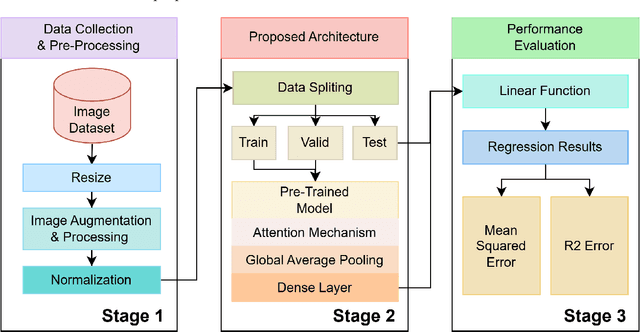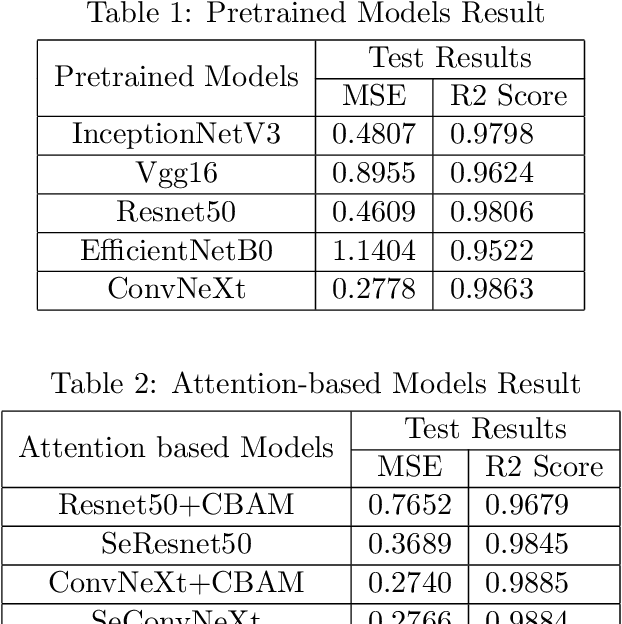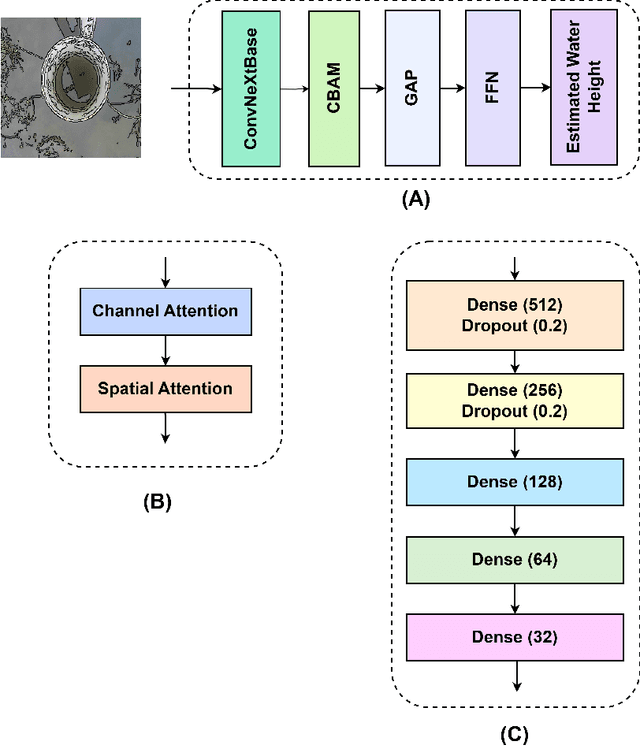Swakkhar Shatabda
MathMist: A Parallel Multilingual Benchmark Dataset for Mathematical Problem Solving and Reasoning
Oct 16, 2025Abstract:Mathematical reasoning remains one of the most challenging domains for large language models (LLMs), requiring not only linguistic understanding but also structured logical deduction and numerical precision. While recent LLMs demonstrate strong general-purpose reasoning abilities, their mathematical competence across diverse languages remains underexplored. Existing benchmarks primarily focus on English or a narrow subset of high-resource languages, leaving significant gaps in assessing multilingual and cross-lingual mathematical reasoning. To address this, we introduce MathMist, a parallel multilingual benchmark for mathematical problem solving and reasoning. MathMist encompasses over 21K aligned question-answer pairs across seven languages, representing a balanced coverage of high-, medium-, and low-resource linguistic settings. The dataset captures linguistic variety, multiple types of problem settings, and solution synthesizing capabilities. We systematically evaluate a diverse suite of models, including open-source small and medium LLMs, proprietary systems, and multilingual-reasoning-focused models, under zero-shot, chain-of-thought (CoT), and code-switched reasoning paradigms. Our results reveal persistent deficiencies in LLMs' ability to perform consistent and interpretable mathematical reasoning across languages, with pronounced degradation in low-resource settings. All the codes and data are available at GitHub: https://github.com/mahbubhimel/MathMist
Ready to Translate, Not to Represent? Bias and Performance Gaps in Multilingual LLMs Across Language Families and Domains
Oct 09, 2025Abstract:The rise of Large Language Models (LLMs) has redefined Machine Translation (MT), enabling context-aware and fluent translations across hundreds of languages and textual domains. Despite their remarkable capabilities, LLMs often exhibit uneven performance across language families and specialized domains. Moreover, recent evidence reveals that these models can encode and amplify different biases present in their training data, posing serious concerns for fairness, especially in low-resource languages. To address these gaps, we introduce Translation Tangles, a unified framework and dataset for evaluating the translation quality and fairness of open-source LLMs. Our approach benchmarks 24 bidirectional language pairs across multiple domains using different metrics. We further propose a hybrid bias detection pipeline that integrates rule-based heuristics, semantic similarity filtering, and LLM-based validation. We also introduce a high-quality, bias-annotated dataset based on human evaluations of 1,439 translation-reference pairs. The code and dataset are accessible on GitHub: https://github.com/faiyazabdullah/TranslationTangles
Watch, Listen, Understand, Mislead: Tri-modal Adversarial Attacks on Short Videos for Content Appropriateness Evaluation
Jul 16, 2025Abstract:Multimodal Large Language Models (MLLMs) are increasingly used for content moderation, yet their robustness in short-form video contexts remains underexplored. Current safety evaluations often rely on unimodal attacks, failing to address combined attack vulnerabilities. In this paper, we introduce a comprehensive framework for evaluating the tri-modal safety of MLLMs. First, we present the Short-Video Multimodal Adversarial (SVMA) dataset, comprising diverse short-form videos with human-guided synthetic adversarial attacks. Second, we propose ChimeraBreak, a novel tri-modal attack strategy that simultaneously challenges visual, auditory, and semantic reasoning pathways. Extensive experiments on state-of-the-art MLLMs reveal significant vulnerabilities with high Attack Success Rates (ASR). Our findings uncover distinct failure modes, showing model biases toward misclassifying benign or policy-violating content. We assess results using LLM-as-a-judge, demonstrating attack reasoning efficacy. Our dataset and findings provide crucial insights for developing more robust and safe MLLMs.
VisText-Mosquito: A Multimodal Dataset and Benchmark for AI-Based Mosquito Breeding Site Detection and Reasoning
Jun 17, 2025Abstract:Mosquito-borne diseases pose a major global health risk, requiring early detection and proactive control of breeding sites to prevent outbreaks. In this paper, we present VisText-Mosquito, a multimodal dataset that integrates visual and textual data to support automated detection, segmentation, and reasoning for mosquito breeding site analysis. The dataset includes 1,828 annotated images for object detection, 142 images for water surface segmentation, and natural language reasoning texts linked to each image. The YOLOv9s model achieves the highest precision of 0.92926 and mAP@50 of 0.92891 for object detection, while YOLOv11n-Seg reaches a segmentation precision of 0.91587 and mAP@50 of 0.79795. For reasoning generation, our fine-tuned BLIP model achieves a final loss of 0.0028, with a BLEU score of 54.7, BERTScore of 0.91, and ROUGE-L of 0.87. This dataset and model framework emphasize the theme "Prevention is Better than Cure", showcasing how AI-based detection can proactively address mosquito-borne disease risks. The dataset and implementation code are publicly available at GitHub: https://github.com/adnanul-islam-jisun/VisText-Mosquito
HingeRLC-GAN: Combating Mode Collapse with Hinge Loss and RLC Regularization
Mar 24, 2025Abstract:Recent advances in Generative Adversarial Networks (GANs) have demonstrated their capability for producing high-quality images. However, a significant challenge remains mode collapse, which occurs when the generator produces a limited number of data patterns that do not reflect the diversity of the training dataset. This study addresses this issue by proposing a number of architectural changes aimed at increasing the diversity and stability of GAN models. We start by improving the loss function with Wasserstein loss and Gradient Penalty to better capture the full range of data variations. We also investigate various network architectures and conclude that ResNet significantly contributes to increased diversity. Building on these findings, we introduce HingeRLC-GAN, a novel approach that combines RLC Regularization and the Hinge loss function. With a FID Score of 18 and a KID Score of 0.001, our approach outperforms existing methods by effectively balancing training stability and increased diversity.
Adaptive Tabu Dropout for Regularization of Deep Neural Network
Dec 31, 2024Abstract:Dropout is an effective strategy for the regularization of deep neural networks. Applying tabu to the units that have been dropped in the recent epoch and retaining them for training ensures diversification in dropout. In this paper, we improve the Tabu Dropout mechanism for training deep neural networks in two ways. Firstly, we propose to use tabu tenure, or the number of epochs a particular unit will not be dropped. Different tabu tenures provide diversification to boost the training of deep neural networks based on the search landscape. Secondly, we propose an adaptive tabu algorithm that automatically selects the tabu tenure based on the training performances through epochs. On several standard benchmark datasets, the experimental results show that the adaptive tabu dropout and tabu tenure dropout diversify and perform significantly better compared to the standard dropout and basic tabu dropout mechanisms.
BanglishRev: A Large-Scale Bangla-English and Code-mixed Dataset of Product Reviews in E-Commerce
Dec 17, 2024



Abstract:This work presents the BanglishRev Dataset, the largest e-commerce product review dataset to date for reviews written in Bengali, English, a mixture of both and Banglish, Bengali words written with English alphabets. The dataset comprises of 1.74 million written reviews from 3.2 million ratings information collected from a total of 128k products being sold in online e-commerce platforms targeting the Bengali population. It includes an extensive array of related metadata for each of the reviews including the rating given by the reviewer, date the review was posted and date of purchase, number of likes, dislikes, response from the seller, images associated with the review etc. With sentiment analysis being the most prominent usage of review datasets, experimentation with a binary sentiment analysis model with the review rating serving as an indicator of positive or negative sentiment was conducted to evaluate the effectiveness of the large amount of data presented in BanglishRev for sentiment analysis tasks. A BanglishBERT model is trained on the data from BanglishRev with reviews being considered labeled positive if the rating is greater than 3 and negative if the rating is less than or equal to 3. The model is evaluated by being testing against a previously published manually annotated dataset for e-commerce reviews written in a mixture of Bangla, English and Banglish. The experimental model achieved an exceptional accuracy of 94\% and F1 score of 0.94, demonstrating the dataset's efficacy for sentiment analysis. Some of the intriguing patterns and observations seen within the dataset and future research directions where the dataset can be utilized is also discussed and explored. The dataset can be accessed through https://huggingface.co/datasets/BanglishRev/bangla-english-and-code-mixed-ecommerce-review-dataset.
An Enhanced Text Compression Approach Using Transformer-based Language Models
Dec 15, 2024



Abstract:Text compression shrinks textual data while keeping crucial information, eradicating constraints on storage, bandwidth, and computational efficacy. The integration of lossless compression techniques with transformer-based text decompression has received negligible attention, despite the increasing volume of English text data in communication. The primary barrier in advancing text compression and restoration involves optimizing transformer-based approaches with efficient pre-processing and integrating lossless compression algorithms, that remained unresolved in the prior attempts. Here, we propose a transformer-based method named RejuvenateForme for text decompression, addressing prior issues by harnessing a new pre-processing technique and a lossless compression method. Our meticulous pre-processing technique incorporating the Lempel-Ziv-Welch algorithm achieves compression ratios of 12.57, 13.38, and 11.42 on the BookCorpus, EN-DE, and EN-FR corpora, thus showing state-of-the-art compression ratios compared to other deep learning and traditional approaches. Furthermore, the RejuvenateForme achieves a BLEU score of 27.31, 25.78, and 50.45 on the EN-DE, EN-FR, and BookCorpus corpora, showcasing its comprehensive efficacy. In contrast, the pre-trained T5-Small exhibits better performance over prior state-of-the-art models.
Accurate Water Level Monitoring in AWD Rice Cultivation Using Convolutional Neural Networks
Dec 12, 2024



Abstract:The Alternate Wetting and Drying (AWD) method is a rice-growing water management technique promoted as a sustainable alternative to Continuous Flooding (CF). Climate change has placed the agricultural sector in a challenging position, particularly as global water resources become increasingly scarce, affecting rice production on irrigated lowlands. Rice, a staple food for over half of the world's population, demands significantly more water than other major crops. In Bangladesh, Boro rice, in particular, requires considerable water inputs during its cultivation. Traditionally, farmers manually measure water levels, a process that is both time-consuming and prone to errors. While ultrasonic sensors offer improvements in water height measurement, they still face limitations, such as susceptibility to weather conditions and environmental factors. To address these issues, we propose a novel approach that automates water height measurement using computer vision, specifically through a convolutional neural network (CNN). Our attention-based architecture achieved an $R^2$ score of 0.9885 and a Mean Squared Error (MSE) of 0.2766, providing a more accurate and efficient solution for managing AWD systems.
A Bidirectional Siamese Recurrent Neural Network for Accurate Gait Recognition Using Body Landmarks
Dec 05, 2024Abstract:Gait recognition is a significant biometric technique for person identification, particularly in scenarios where other physiological biometrics are impractical or ineffective. In this paper, we address the challenges associated with gait recognition and present a novel approach to improve its accuracy and reliability. The proposed method leverages advanced techniques, including sequential gait landmarks obtained through the Mediapipe pose estimation model, Procrustes analysis for alignment, and a Siamese biGRU-dualStack Neural Network architecture for capturing temporal dependencies. Extensive experiments were conducted on large-scale cross-view datasets to demonstrate the effectiveness of the approach, achieving high recognition accuracy compared to other models. The model demonstrated accuracies of 95.7%, 94.44%, 87.71%, and 86.6% on CASIA-B, SZU RGB-D, OU-MVLP, and Gait3D datasets respectively. The results highlight the potential applications of the proposed method in various practical domains, indicating its significant contribution to the field of gait recognition.
 Add to Chrome
Add to Chrome Add to Firefox
Add to Firefox Add to Edge
Add to Edge